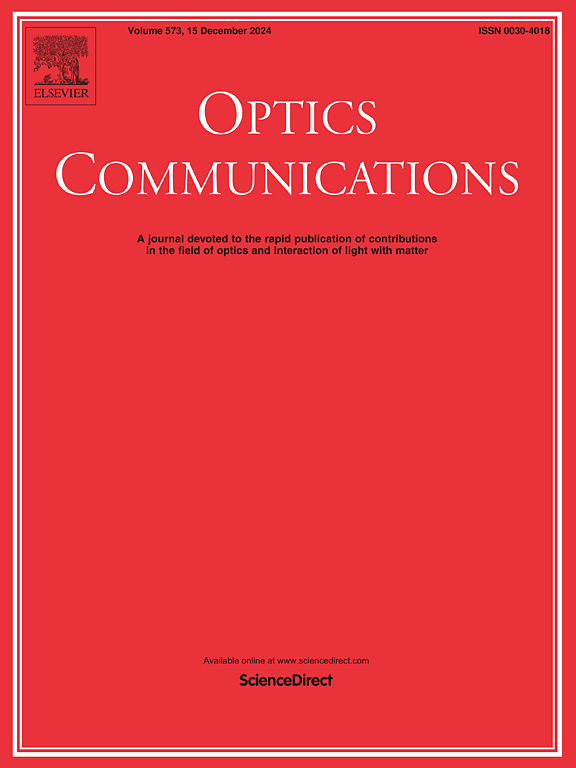A speckle enhanced prism spectrometer based on planar lightwave circuit chip
IF 2.5
3区 物理与天体物理
Q2 OPTICS
引用次数: 0
Abstract
We present a new spectrometer design which combines a conventional prism spectrometer with planar lightwave circuits (PLC) in this study. The PLC chip was integrated in front of the prism as a scattering medium to improve the spectral resolution. Interferences among different modes in the multimode waveguide create wavelength-dependent speckle patterns. Since the speckle patterns corresponding to different wavelengths are deterministic and unique, they can be utilized for wavelength identification after calibration. In addition, the spectral-spatial mapping through the prism further enhances the contrast of speckles, thereby improving the resolution and bandwidth. Compared with conventional prism spectrometers, the speckle-enhanced prism spectrometer incorporates both a scattering medium and a prism, enabling simultaneous high resolution and wide bandwidth. Moreover, the narrow output of the PLC can replace the slit in conventional spectrometers, further improving the optical efficiency to 40%. In demonstration experiments, the proposed spectrometer successfully measured multiple laser wavelengths and a broad band light source. The resolution of up to 5 pm over the wavelength range of 1525–1565 nm was achieved. This study paves the way for the development of high-resolution spectrometers with smaller volumes and higher optical efficiency.
基于平面光波电路芯片的散斑增强棱镜光谱仪
本文提出了一种将传统的棱镜光谱仪与平面光波电路(PLC)相结合的新型光谱仪设计方案。在棱镜前集成PLC芯片作为散射介质,提高了光谱分辨率。在多模波导中,不同模式之间的干扰会产生波长相关的散斑图案。由于不同波长对应的散斑模式具有确定性和唯一性,可用于标定后的波长识别。此外,通过棱镜的光谱空间映射进一步增强了散斑的对比度,从而提高了分辨率和带宽。与传统的棱镜光谱仪相比,散斑增强棱镜光谱仪结合了散射介质和棱镜,同时具有高分辨率和宽带宽。此外,PLC的窄输出可以取代传统光谱仪的狭缝,进一步将光学效率提高到40%。在演示实验中,该光谱仪成功地测量了多个激光波长和一个宽带光源。在1525-1565 nm波长范围内,达到了高达5 pm的分辨率。该研究为研制体积更小、光学效率更高的高分辨率光谱仪铺平了道路。
本文章由计算机程序翻译,如有差异,请以英文原文为准。
求助全文
约1分钟内获得全文
求助全文
来源期刊

Optics Communications
物理-光学
CiteScore
5.10
自引率
8.30%
发文量
681
审稿时长
38 days
期刊介绍:
Optics Communications invites original and timely contributions containing new results in various fields of optics and photonics. The journal considers theoretical and experimental research in areas ranging from the fundamental properties of light to technological applications. Topics covered include classical and quantum optics, optical physics and light-matter interactions, lasers, imaging, guided-wave optics and optical information processing. Manuscripts should offer clear evidence of novelty and significance. Papers concentrating on mathematical and computational issues, with limited connection to optics, are not suitable for publication in the Journal. Similarly, small technical advances, or papers concerned only with engineering applications or issues of materials science fall outside the journal scope.
 求助内容:
求助内容: 应助结果提醒方式:
应助结果提醒方式:


